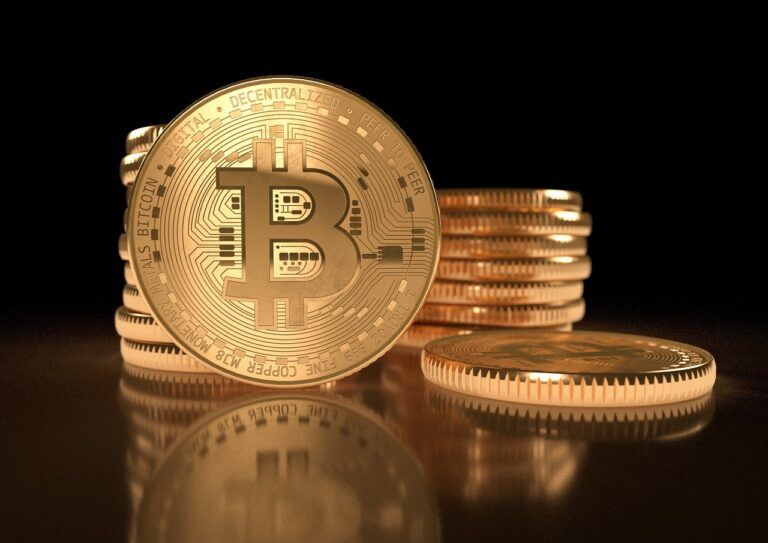
In a video released on January 20th on his YouTube channel, Andrei Jikh discusses his experience with buying all the Bitcoin ETFs that were recently released. He tries to them from worst to best and answer commonly asked questions about these ETFs.
He highlights that on its first trading day, the new spot Bitcoin ETFs generated $4.6 billion. He provides context by comparing this to the combined trading volume of around 500 ETFs created in 2023, which was $450 million on a particular Tuesday, with the highest individual ETF reaching $45 million. In contrast, Bitcoin’s 11 spot ETFs achieved $4.6 billion in a single day, making it the most popular ETF asset class ever.Jikh notes that despite the high trading volume,
Jikh says Bitcoin’s price remained relatively stable on the day of the ETFs’ launch and then dropped from $46,500 to $42,500 over the following days. He explains this with the concept of trading volume, which accounts for both net inflows and outflows (purchases and sales). The $4.6 billion on its first trading day includes both. He identifies the Grayscale Bitcoin Trust (ticker symbol GBTC) as the biggest contributor to net outflows.
Jikh explains that the Grayscale Bitcoin Trust (GBTC) underwent a complex conversion process into a spot ETF, which reduced the gap between the ETF’s price and the price of Bitcoin itself, known as the discount to the NAV (Net Asset Value). Previously, from February 2021 until January 10th, 2024, it was cheaper to buy GBTC than Bitcoin directly. Many investors apparently sold GBTC to collect profits before the discount window closed. He also points out that GBTC is expensive due to its high fees.
Jikh emphasizes that not all spot Bitcoin ETFs are created equal, which led him to buy into all of them to compare their performance.He then addresses a common misconception about the impact of these spot ETFs on asset prices.
Many expected Bitcoin to surge to $100,000 immediately after the spot ETFs’ approval, but Jikh compares this to the history of gold ETFs, which did not see immediate significant price increases post-launch. For instance, gold’s price decreased by about 1.4% from its ETF launch in November 2004 to the end of that year, and it only started to increase significantly in the third quarter of 2005.
Jikh then moves on to rank the US spot Bitcoin ETFs based on price growth and lowest expense ratio.
He invested $100 in each Bitcoin ETF on January 11th, the day the ETFs started trading. However, he was unable to purchase two of the ETFs, IBIT and DEFI, due to issues with Robinhood’s system.
He used his portfolio tracker to simulate what would have happened if he had bought those ETFs, which he shares on his Patreon.
Starting with the worst performer based on his $100 investment, the video details the performance of the ETFs, beginning with the ticker symbol DEFI.
<!–
–> <!–
–>
Jikh ranks the Bitcoin ETFs based on their performance after his investment. The ETF with the ticker symbol DEFI performed the worst, losing over 15%, and would have reduced his $100 investment to $84.8. Interestingly, he was unable to buy into the two worst-performing ETFs, DEFI and IBIT (BlackRock’s ETF), due to order cancellations on Robinhood. IBIT lost 12.6%, which would have left his investment at $87.3.
He then lists the performance of other ETFs:
- BITB (Bitwise): Lost 8.34%, leaving $91.6.
- FBTC (Fidelity): Lost 8.2%, leaving $91.8.
- ARKB (Cathie Wood’s Bitcoin fund): Lost 8.01%, leaving $91.99.
- BRRR: Lost 7.88%, leaving $92.2.
- EZBC: Lost 7.85%, leaving $92.5.
The ETFs HODL and BTCW both lost 7.73%. He comments on the expense ratios of these ETFs, noting that DEFI has a high expense ratio of 0.9%, while GBTC is even higher at 1.5%. He compares this to other ETFs with lower expense ratios but varying performance.
Finally, Jikh concludes that the best ETF, combining price growth and low expense ratio, is Invesco’s BTCO. He recommends this for those prioritizing low expense ratios, with BITB and ARKB as close alternatives. He advises learning about self-custody of Bitcoin and eventually moving towards owning actual Bitcoin instead of ETFs. He likens owning a Bitcoin ETF to having a relationship where someone else maintains your significant other and sends you photos, charging a fee for their care.
For those who don’t want to self-custody Bitcoin and prefer ETFs in their 401k, he finds it difficult to recommend the best option. He notes that different companies have varying strategies and levels of experience. GBTC, despite its high fees, is the most battle-tested with significant liquidity and client base. He raises the potential risks associated with ETFs storing their coins through services like Coinbase, posing a hypothetical hacking scenario.
Jikh discusses the risks associated with Bitcoin ETFs, particularly in the event of a hacking incident. He explains that customers technically do not own the coins but have a claim to the ETF security. If within the insurance limit of SIPC, they should be protected unless regulatory complications arise, like those from the SEC.
He questions whether Fidelity’s FBTC might be a safer option since Fidelity holds the Bitcoin themselves and is a regulated institution. However, he notes that Fidelity has less experience in holding Bitcoin compared to other companies, such as Coinbase.
Jikh admits that there is no definitive answer to which ETF is the best, acknowledging that most people won’t think this far ahead. He emphasizes that while he has based his rankings on which ETF lost the least, this does not necessarily mean it’s the best, as the ETF that lost the most could potentially yield the highest returns in the future.
The ideal ETF, according to Jikh, would be one that loses the least when Bitcoin’s price is down and gains the most when it’s up. However, more data is needed for a conclusive assessment.
[embedded content]
Featured Image via Pixabay
- SEO Powered Content & PR Distribution. Get Amplified Today.
- PlatoData.Network Vertical Generative Ai. Empower Yourself. Access Here.
- PlatoAiStream. Web3 Intelligence. Knowledge Amplified. Access Here.
- PlatoESG. Carbon, CleanTech, Energy, Environment, Solar, Waste Management. Access Here.
- PlatoHealth. Biotech and Clinical Trials Intelligence. Access Here.
- Source: https://www.cryptoglobe.com/latest/2024/01/spot-bitcoin-etf-showdown-personal-finance-guru-andrei-jikh-reveals-the-best-and-worst-performers-in-his-crypto-investment-journey/
- :has
- :is
- :not
- :where
- $UP
- 000
- 1
- 10
- 10th
- 11
- 11th
- 12
- 15%
- 2%
- 2005
- 2021
- 2023
- 2024
- 20th
- 360
- 401K
- 500
- 7
- 8
- a
- About
- According
- Accounts
- achieved
- actual
- addresses
- Ads
- After
- ahead
- All
- also
- alternatives
- and
- answer
- approval
- ARE
- arise
- around
- AS
- asked
- assessment
- asset
- asset class
- associated
- At
- base
- based
- BE
- before
- Beginning
- BEST
- between
- Biggest
- Billion
- BitB
- Bitcoin
- Bitcoin ETF
- Bitcoin Trust
- Bitwise
- both
- bought
- but
- buy
- Buying
- by
- care
- Channel
- charging
- cheaper
- claim
- class
- client
- Close
- closed
- coinbase
- Coins
- collect
- combined
- combining
- comments
- Common
- commonly
- Companies
- compare
- compared
- comparing
- complex
- complications
- concept
- concludes
- content
- context
- contrast
- contributor
- Conversion
- could
- created
- CryptoGlobe
- Customers
- data
- day
- Days
- decreased
- DeFi
- definitive
- Despite
- details
- DID
- different
- difficult
- directly
- Discount
- discusses
- do
- does
- Dont
- down
- dropped
- due
- each
- else
- embedded
- emphasizes
- end
- equal
- ETF
- ETFs
- Even
- Event
- eventually
- EVER
- expected
- expense
- expensive
- experience
- Explains
- far
- February
- fee
- Fees
- fidelity
- finance
- finds
- First
- following
- For
- from
- fund
- future
- Gains
- gap
- GBTC
- generated
- Gold
- Grayscale
- Grayscale Bitcoin Trust
- Grayscale Bitcoin Trust (GBTC)
- Growth
- hacking
- had
- happened
- Have
- having
- he
- High
- higher
- highest
- highlights
- him
- his
- history
- HODL
- holding
- holds
- However
- HTTPS
- i
- ideal
- identifies
- if
- image
- immediate
- immediately
- Impact
- in
- incident
- includes
- Increase
- Increases
- individual
- inflows
- instance
- instead
- Institution
- insurance
- into
- invested
- investment
- Investors
- issues
- IT
- ITS
- itself
- January
- jpg
- known
- launch
- learning
- least
- leaving
- Led
- left
- less
- levels
- like
- LIMIT
- Liquidity
- Lists
- Loses
- losing
- lost
- Low
- lower
- lowest
- maintains
- Making
- many
- mean
- might
- million
- more
- most
- Most Popular
- moves
- moving
- nav
- necessarily
- needed
- net
- net asset value
- New
- no
- Notes
- noting
- November
- of
- on
- ONE
- only
- Option
- order
- Other
- out
- outflows
- over
- own
- owning
- particular
- particularly
- Patreon
- People
- performance
- performed
- performer
- personal
- Personal Finance
- Photos
- plato
- Plato Data Intelligence
- PlatoData
- points
- Popular
- portfolio
- post-launch
- potential
- potentially
- prefer
- previously
- price
- Prices
- prioritizing
- process
- profits
- protected
- provides
- purchase
- purchases
- Quarter
- Questions
- raises
- rank
- Ranking
- ranks
- ratio
- ratios
- reaching
- recently
- recommend
- recommends
- Reduced
- regulated
- regulatory
- relationship
- relatively
- released
- remained
- returns
- risks
- Robinhood
- s
- safer
- sales
- says
- scenario
- Screen
- screens
- SEC
- security
- see
- Self Custody
- sends
- Services
- Shares
- should
- significant
- significantly
- simulate
- since
- single
- sizes
- sold
- Someone
- Spot
- Spot Bitcoin Etf
- spot etf
- stable
- started
- strategies
- such
- surge
- symbol
- system
- technically
- than
- that
- The
- The Coins
- The Future
- their
- Them
- themselves
- then
- There.
- These
- they
- Think
- Third
- this
- those
- Through
- ticker
- to
- towards
- Trading
- trading volume
- Trust
- Tuesday
- two
- u.s.
- unable
- underwent
- until
- us
- use
- used
- value
- varying
- via
- Video
- volume
- want
- was
- were
- What
- when
- whether
- which
- while
- WHO
- window
- with
- within
- Worst
- worst performer
- would
- year
- Yield
- you
- Your
- youtube
- zephyrnet












